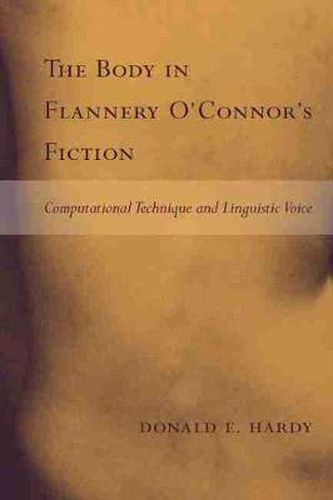Readings Newsletter
Become a Readings Member to make your shopping experience even easier.
Sign in or sign up for free!
You’re not far away from qualifying for FREE standard shipping within Australia
You’ve qualified for FREE standard shipping within Australia
The cart is loading…






This is a reading of physical obsession in O'Connor through linguistic and literary techniques. This work extends the innovative thesis that it is possible to grasp the central struggle between spirit and matter in O'Connor through a close quantitative examination of the interactions of grammatical voice and physical bodies in her texts. Bridging literary theory and linguistics, Hardy demonstrates that the many constructions in which the body parts of O'Connor’s characters are foregrounded, either as subjects or objects, are grammatical manipulations of semantic variations on what linguists deem the middle voice - roughly indicating that the subject is acting upon himself or herself. Hardy combines computational and linguistic methodology to provide a productive approach to understanding O'Connor’s use of the body and its parts in her explorations of the sacramental and the grotesque. Linguistic analysis of grammatical middle voice is coupled with quantitative analysis of body-part words and the collocations in which they appear to present a new point of entrance to understanding O'Connor’s stylistic manipulations of the body as central to the rift between spirit and matter. Through this method of reading O'Connor, Hardy makes a valuable contribution to the growing body of work that is introducing linguistic terminology and concepts into literary studies.
$9.00 standard shipping within Australia
FREE standard shipping within Australia for orders over $100.00
Express & International shipping calculated at checkout
This is a reading of physical obsession in O'Connor through linguistic and literary techniques. This work extends the innovative thesis that it is possible to grasp the central struggle between spirit and matter in O'Connor through a close quantitative examination of the interactions of grammatical voice and physical bodies in her texts. Bridging literary theory and linguistics, Hardy demonstrates that the many constructions in which the body parts of O'Connor’s characters are foregrounded, either as subjects or objects, are grammatical manipulations of semantic variations on what linguists deem the middle voice - roughly indicating that the subject is acting upon himself or herself. Hardy combines computational and linguistic methodology to provide a productive approach to understanding O'Connor’s use of the body and its parts in her explorations of the sacramental and the grotesque. Linguistic analysis of grammatical middle voice is coupled with quantitative analysis of body-part words and the collocations in which they appear to present a new point of entrance to understanding O'Connor’s stylistic manipulations of the body as central to the rift between spirit and matter. Through this method of reading O'Connor, Hardy makes a valuable contribution to the growing body of work that is introducing linguistic terminology and concepts into literary studies.